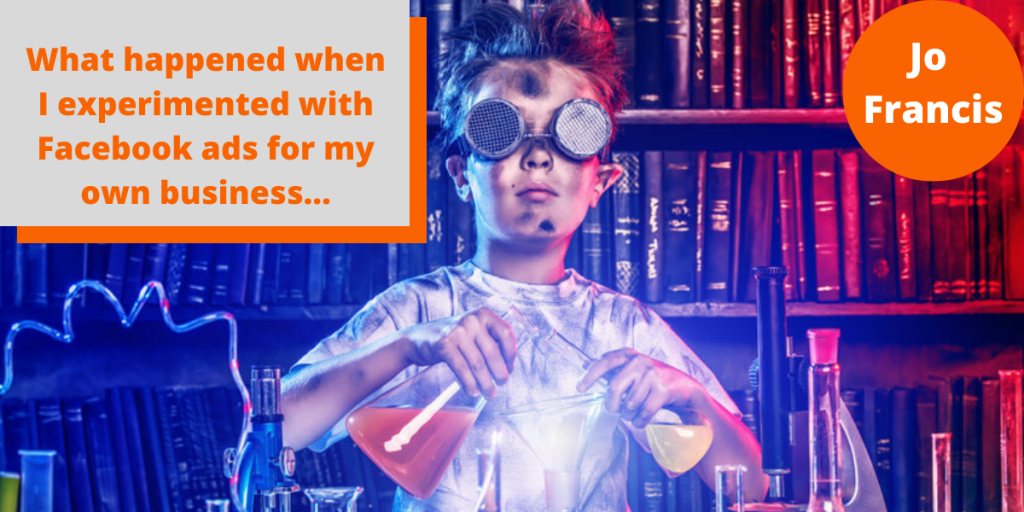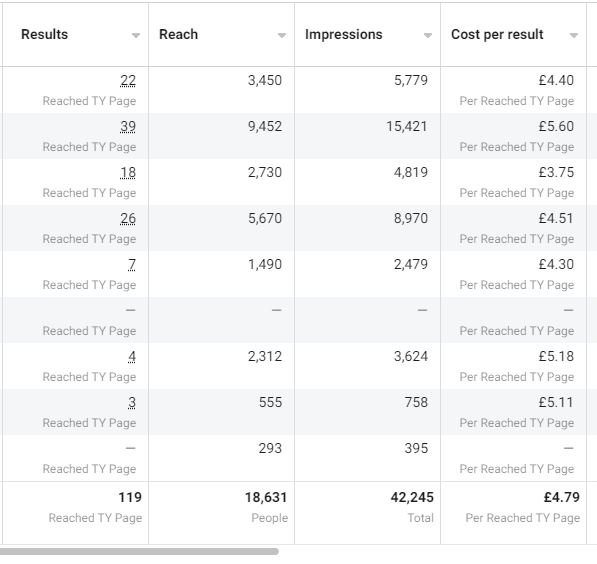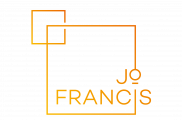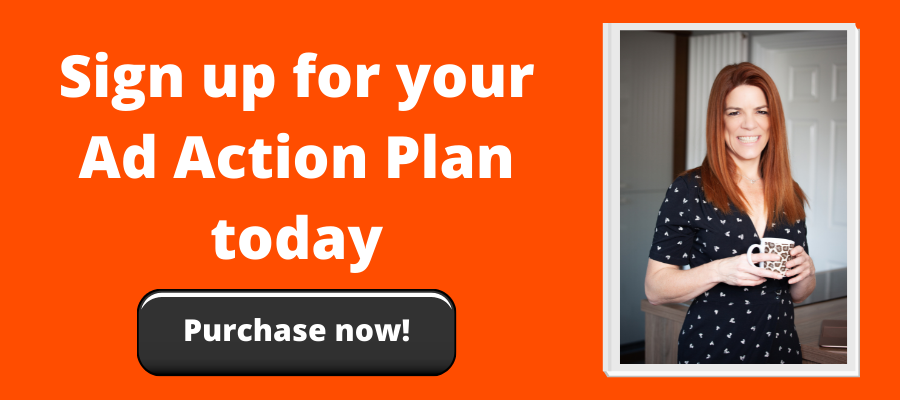
What happened when I experimented with Facebook ads for my own business…
As a busy Facebook Ad Strategist, I’m pretty fortunate to have built a solid base of established clients and to welcome a steady stream of new clients, more often than not from referrals, which can sometimes mean that I don’t practice what I preach – and the marketing for my own business takes a back seat.
Now I’m the first to say that you cannot rely on referrals for new business, so I decided it was time to take myself in hand and think about growing my email list.
And why not chuck some Facebook ads into the mix!
Setting the budget and building the ad campaign
So, I allocated a budget of up to £600 and set about my four week list building experiment.
Now despite what I know about audiences and detailed targeting, I was pretty short on time and opted for a reasonably quick and easy campaign set up, just using my lookalike audiences – these are audiences that Facebook create targeting people that “look like” those who already follow me on Facebook, Instagram or are on my email list already or have visited my website.
Had I wanted to really look into the stats and analytics of where I get the best return for my money, I would have broken these down into separate audiences, but, for me, simplicity in this instance was key, and so all the audiences were put together in one ad set.
Additionally, I was less generous with my time for my own ads, so I only used three different images and two different variations of copy, as testing wasn’t a big issue for me.

I quickly established that one image was bombing – my ego took a dent as it was an image of me with no branding! I’d included this image in my ads in the hope of unobtrusively sliding into people’s Facebook feed and not looking too much like an ad!
It did get 4 sign ups, but at a CPL (cost per lead) of £5.18.

So how did the two other images get on?
Well, the other image of my face, but with text on the image, produced 72 sign ups at an average CPL (cost per lead) of £5.08.
The stock image, with text on the image, produced less sign ups, just 43, but at a lower CPL of £4.18.
Overall Facebook ad campaign results
You may have done the maths already but I got a total of 119 sign ups, at an average CPL of £4.79, spending £570.11 in total. The ads ran for three weeks.

And I’m the first to admit that part of me was horrified – that felt like a high cost per lead.
Especially when I have worked on client Facebook ads for lead magnets and produced CPL’s as low as £0.11.
But, I gave myself a stern talking to and brought my mind back to the LTV of my average client – and that’s where you have to focus…on the lifetime value of a client.
A well written, well targeted ad and a valuable lead magnet will do their job – bring contacts to your email list.
But the magic is in converting those leads into clients.
Onto the second phase of the experiment.
I had created a very small “nurture sequence” on MailChimp to run with the lead magnet.
A delivery email, a check in email, an added value email and then a sell (my Power Hour).
Where are we at the end of the four week experiment
I sold one Power Hour – £97.00 revenue.
One new email contact rang me when he received his download.
Now THAT is unusual.
More unusual is that I answered the phone!
We chatted briefly and I sent him details of how to book for a Power Hour or an Ad Action Plan.
He booked the Ad Action Plan – £147.00 revenue.
I delivered the Ad Action Plan and the campaign strategy within it was booked and confirmed almost immediately – £1350.00 revenue.
Does it feel like a good return on investment?
I spent £570 which in turn has created £1594 of revenue.
So realistically I am just over £1000 better off, although there is a time allocation associated with that £1000 as I have ad campaigns and client work to fulfill now.
But – I have welcomed on board two new clients so the potential is that their spend with me will continue beyond that which I’ve seen in this first four weeks.
And, aside from them, there are the other 117 new people on my list.
I have only had them on my list for less than four weeks, so the chances are they don’t even know me yet. I haven’t aggressively done any email marketing apart from their download delivery, so they’re still in the warm up phase.
If I convert just one or two more of the new contacts into clients, it will feel like a much bigger win.
From a four week experiment point of view, I’m happy with a ROAS (return on ad spend) of 2.8 and I know, because I understand that Facebook ads form part of a sales funnel and are NOT a magic bullet, that the ROAS will continue to rise as I continue to nurture my new contacts.
If this has got you thinking about launching ads for your lead magnet, then jump straight in and book your Ad Action Plan.

